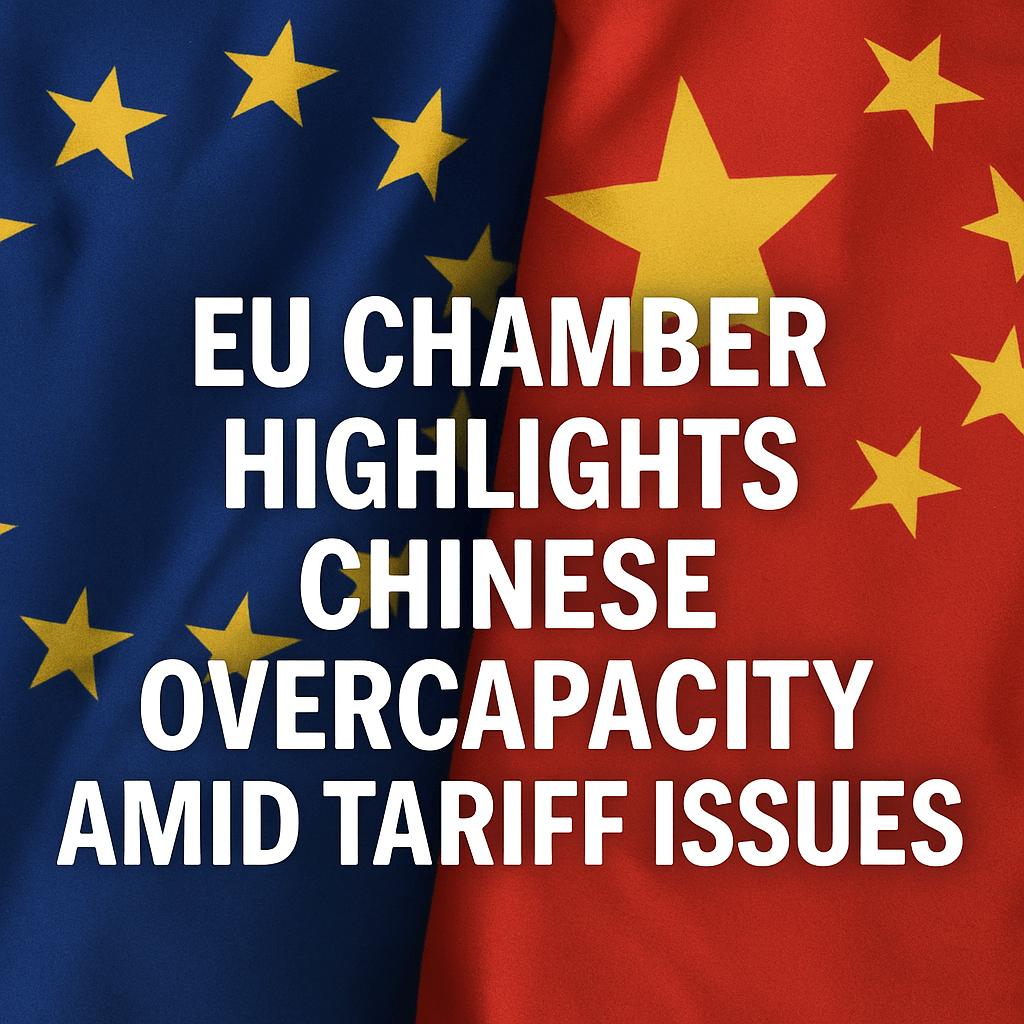EU Chamber Highlights Chinese Overcapacity Amid Tariff Issues

The latest Business Confidence Survey 2025 from the European Union Chamber of Commerce in China highlights a deterioration across multiple economic indicators, driven by a prolonged real estate crisis and an export‐led growth model that is now backfiring domestically.
Market Dynamics: Exports vs. Domestic Demand
China’s export volumes surged by 14.2% year-on-year in Q1 2024, buoyed by robust global demand for electric vehicles (EVs) and electronics. At the same time, urban consumer spending grew a mere 0.9% as property investment contracted by 6.8% amid lingering developer defaults and unsold inventory exceeding 30% of total housing stock.
“The picture has deteriorated across many key metrics,” Jens Eskelund, president of the EU Chamber in China, said. “Fierce price competition and overcapacity are eroding profit margins while consumer demand remains subdued.”
Electric Vehicle Overcapacity: A Technical Deep Dive
State subsidies—up to 60,000 RMB per vehicle in some provinces—have incentivized Chinese manufacturers to ramp up EV production. Production capacity is forecast to reach 9 million units by 2025, however domestic sales totaled only 6.4 million units in 2023.
- Gigafactory count: 70+ facilities nationwide with combined annual battery cell capacity of 800 GWh.
- Export growth: Chinese EV shipments to Europe jumped 52% y/y in 2023.
- EU tariffs: A provisional 38.1% import duty on Chinese EVs, enacted in May 2023.
Policy Responses and Geopolitical Tensions
Facing pushback from Brussels and Washington, Beijing has cut key lending rates—including a 15 bps cut to the medium‐term lending facility—and imposed stricter controls on new capacity approvals in strategic sectors. Yet trade tensions persist:
- The EU’s anti-dumping duties on high-capacity batteries and EVs were extended for another year in March 2024.
- The U.S. Department of Commerce is evaluating additional Section 301 tariffs on Chinese machinery and semiconductor equipment.
- China’s Ministry of Commerce has launched anti-subsidy investigations into certain European auto imports.
Impact on Global Supply Chains
Overcapacity in China is shifting supply dynamics worldwide:
- Tier-1 suppliers in Germany and Japan report order backlogs falling by up to 20% as Chinese components undercut prices.
- Logistics costs from Shanghai to Rotterdam have declined by 8% since late 2023, reflecting softer demand.
- A recent McKinsey analysis warns that continued capacity mismatches could depress auto sector EBITDA margins globally by 150–200 basis points by 2026.
Business Confidence and Profit Pressures
Surveying 500 member companies from mid-January to mid-February, the EU Chamber found that:
- 68% reported increased downward pressure on profit margins over the past 12 months.
- 54% see no immediate improvement in business confidence, forecasting flat or negative growth through late 2025.
- Manufacturers in the auto and battery sectors were the most pessimistic, with 74% citing overcapacity as a primary risk.
Expert Opinions
According to Dr. Elena Petrova, senior economist at the International Monetary Fund, “China must rebalance by phasing out inefficient capacity, introducing market‐driven pricing, and stimulating private consumption through targeted fiscal relief.”
Outlook and Recommendations
To stabilize the business environment, the EU Chamber recommends:
- Implementing demand-side subsidies for energy‐efficient appliances rather than broad‐based industrial incentives.
- Enhancing transparency in capacity planning via centralized registry and approval processes.
- Coordinating with trading partners to mutually recognize standards and reduce non-tariff barriers.
Only by aligning supply growth with sustainable household consumption can China mitigate geopolitical frictions and restore international business confidence.